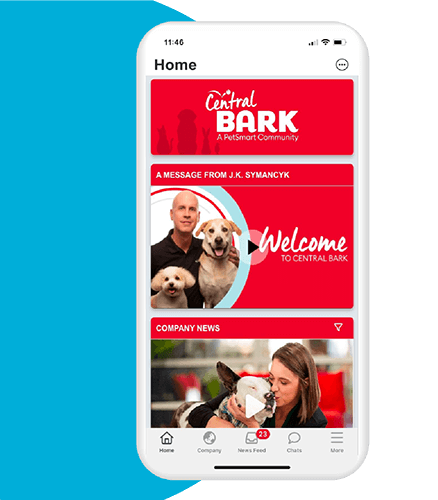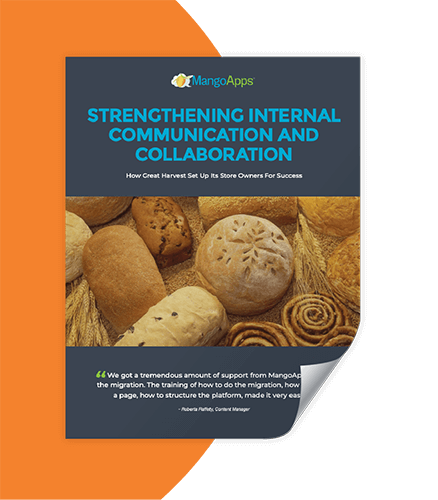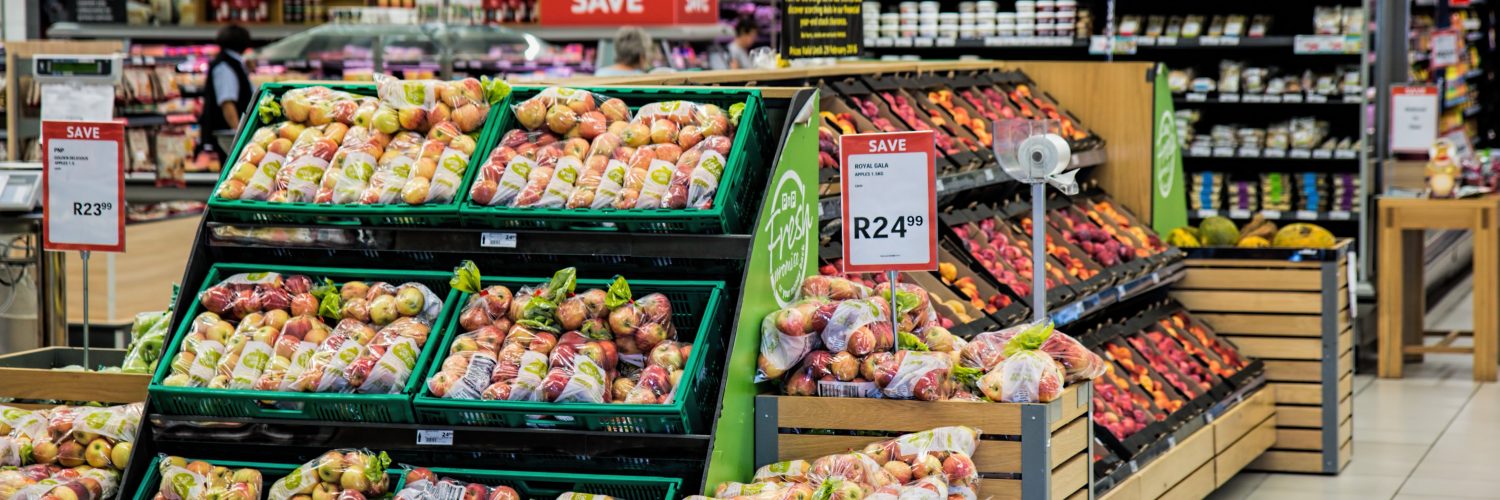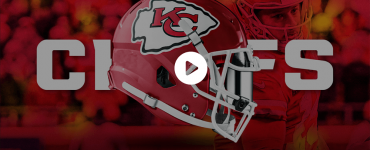In the dynamic world of retail, employee motivation is the fuel that drives performance, customer satisfaction, and overall business success. Your retail employees are the frontline warriors, the face of your brand, and the ones who make the difference between a one-time shopper and a loyal, repeat customer.
But how do you keep your retail teams inspired, engaged, and consistently performing at their best? It’s a question that keeps many retail chain administrators up at night—and for good reason. From creating a positive work environment and recognizing achievements to providing opportunities for growth and development, the challenge of motivating employees is complex, nuanced, and ever-evolving, especially if you don’t have an employee app for retail like MangoApps
This comprehensive guide is designed to unravel this challenge and give you actionable insights on how to motivate your retail employees effectively. Whether you’re a seasoned professional who spends hours strategizing about employee motivation or you’re facing this challenge for the first time, this guide promises to leave you with new perspectives and practical strategies to enhance employee motivation in your retail business. Let’s dive in.
Understanding Retail Employees
To effectively motivate your retail employees, the first step is to understand them. As retail chain administrators, you must acknowledge that each employee is unique, with their own aspirations, motivations, and challenges. They are not just employees but individuals with diverse backgrounds, skills, and outlooks.
A common misconception is that retail workers are all the same—that they’re largely unskilled and interchangeable. However, this couldn’t be farther from the truth. Your retail employees are as diverse as the products on your shelves and the customers who walk through your doors.
While some employees are students trying to make money for tuition, others may be parents working to support their family. Some may see their retail job as a stepping-stone to a different career, while others may view it as their long-term profession. Recognizing these differences and understanding their individual needs and aspirations is the first step in creating effective motivation strategies.
Moreover, retail employees often have to juggle multiple tasks—from customer service to inventory management, and from sales to cleaning and maintenance. They’re constantly interacting with customers, dealing with demands, queries, complaints, and sometimes, even irate customers. This can lead to stress, exhaustion, and burnout if not managed properly.
As such, understanding these aspects of retail employees’ experiences and empathizing with them is crucial. By doing so, you’re more likely to create an environment that respects their individuality, values their efforts, and motivates them to perform to the best of their abilities. The more you understand your retail employees, the better equipped you will be to motivate them effectively.

PetSmart Case Study
Learn how PetSmart has achieved 4x the industry standard for employee engagement with a mobile-first platform built on MangoApps.
Key Strategies to Motivate Retail Employees
In this section, we delve into key strategies for motivating retail employees, all backed by research and practical industry experience. These strategies are tailored to meet the unique needs and circumstances of retail employees, respecting their individuality while fostering an environment conducive to high performance. As you read through these strategies, keep in mind the diverse nature of your retail workforce. Not every strategy will be a perfect fit for every employee, so it’s essential to select and adapt these strategies based on your team’s specific needs and dynamics. Let’s get started.
1. Communication
Effective, clear, and open communication is the cornerstone of any successful motivation strategy. In a retail environment, it’s especially crucial due to the fast-paced nature of the work and the need for employees to collaborate and coordinate effectively.
Open Dialogue
Create an environment where employees feel comfortable expressing their ideas, concerns, and suggestions. This can be achieved through regular team meetings, suggestion boxes, and one-on-one discussions. Encouraging open dialogue can lead to valuable insights abou t improvements and can make employees feel valued and heard.
Regular Updates
Keep your team updated about any changes in business operations, policies, or procedures. Such transparency can prevent confusion, misinformation, and mistrust. In addition, it’s important to remember that communication should be a two-way street.
Positive Feedback
Providing positive feedback is a powerful motivator. When employees know that their hard work is noticed and appreciated, they are more likely to repeat those behaviors. Retail employees often interact directly with customers, so their efforts can greatly impact customer satisfaction.
Constructive Criticism
Constructive criticism is essential for growth and improvement. However, it’s crucial to deliver criticism in a way that doesn’t demoralize or discourage employees. Always provide constructive criticism privately and pair it with concrete suggestions for improvement.
Information Sharing
Information is empowering. When employees are kept in the loop about company goals, performance metrics, and customer feedback, they feel more invested in their work and can better understand how their contributions fit into the bigger picture.
By fostering a culture of open and effective communication, you can create a positive and collaborative work environment that motivates your retail employees to perform their best. Remember, the key to effective communication is not only to speak but also to listen. Listening to your employees, valuing their input, and addressing their concerns can significantly boost their motivation and job satisfaction.
2. Recognition and Rewards
Recognizing and rewarding retail employees for their hard work and achievements is a highly effective way to motivate them. When employees feel appreciated, they are more likely to be engaged, satisfied, and committed to their work.
Employee of the Month
Consider implementing an “Employee of the Month” program. This highlights exemplary work ethic or achievements and sets a standard for all employees. It’s a great way to publicly acknowledge the hard work and dedication of your staff members.
Furthermore, it doesn’t have to be just monthly—sometimes recognition loses its power if you have to wait until the end of the month. Many companies empower managers, and even peers, to recognize employees who do great work in real time. The more ways you can pat your team members on the back in a public forum, the better.
Performance Bonuses
Monetary incentives such as performance bonuses can also motivate employees to perform better. They can be structured based on various factors like sales targets, customer service ratings, or overall performance. It’s important to keep these rewards fair and transparent.
Training and Development Opportunities
Another effective way to motivate retail employees is offering further training or development opportunities. This demonstrates your investment in their career growth and can motivate them to improve their skills and performance.
Team Celebrations
Celebrate team accomplishments with small parties, outings, or team-building events. This not only recognizes the collective efforts of your team but also fosters camaraderie and a sense of belonging.
Personalized Rewards
Remember, what motivates one employee might not motivate another. Tailoring rewards to individual employees can make them feel truly valued. This could include flexible work hours, extra vacation days, or choosing their preferred shifts.
Public Praise
Never underestimate the power of a sincere “thank you.” Publicly praising your employees for their efforts can boost their morale and motivation.
Incorporating recognition and rewards into your management practice can have a tremendous impact on your team’s morale, productivity, and overall job satisfaction. However, it’s essential to ensure that your recognition and rewards program is fair, transparent, and consistent. This can help maintain motivation levels and prevent feelings of favoritism or inequity among your team.
3. Growth Opportunities
In a bustling retail environment, employees are always looking for ways to expand their skills, take on new challenges, and climb the career ladder. A stagnating job can lead to disengagement and lack of motivation. As a retail chain administrator, it is of paramount importance that you cultivate an environment that paves the way for your employees’ growth and development. This section delves into how to motivate retail employees by providing ample growth opportunities, thereby strengthening their loyalty towards your organization.
Promotion from Within
Firstly, fostering a culture where internal promotions are the norm can be a powerful motivator for your retail employees. It gives them a clear view of their career path within your organization and motivates them to excel in their roles. Employees who see their colleagues moving up the ladder will be encouraged to enhance their own skills and performance to advance in the company.
Furthermore, it’s easier to trust a leadership team made up of people who rose through the ranks rather than being hired from the outside.
Continuous Learning
Provide opportunities for continuous learning. This could be in the form of workshops or seminars on topics relevant to your industry, training in new technologies or systems, or even tuition assistance for further education. Continuous learning not only equips your employees with new skills but also keeps them engaged and challenged.
Skill Development
Consider offering skill development programs tailored to your employees’ roles. For example, retail sales staff could benefit from training in customer service or sales techniques, while those in managerial positions could enhance their leadership or conflict resolution skills. Skill development programs not only enhance job performance but also enable employees to take on more complex tasks or roles.
Mentorship Programs
Mentorship programs can be a valuable tool for employee growth. Pairing less experienced employees with seasoned colleagues can expedite learning, enhance job performance, and facilitate the sharing of organizational knowledge. Mentors can provide guidance, support, and feedback, all of which can be instrumental in the professional development of your employees.
Cross-Training
Cross-training allows employees to learn different roles within your organization. This not only enhances their skill set but also provides variety and challenges, keeping them engaged and motivated. It also increases their understanding of the broader business context, enhancing their ability to make informed decisions.
By offering growth opportunities, you signal to your employees that you value their career development and are willing to invest in their future. This not only motivates them to perform better in their current roles but also encourages long-term commitment to your organization. Remember, growth opportunities are about more than just promotions; they are about learning, development, and the potential for personal and professional advancement. Read more strategies for retail employee engagement.
4. Work-Life Balance
In the fast-paced world of retail, it’s easy for employees to find themselves tipping the balance too far in favor of work, neglecting their personal lives in the process. As a retail chain administrator, it’s important to encourage a healthy work-life balance amongst your teams to ensure they remain motivated and avoid burnout. Below are some ways which can help in fostering a work-life balance amongst your retail employees.
Flexible Scheduling
The ability to have some control over their work schedule can greatly enhance an employee’s ability to maintain a work-life balance. This could mean offering flexible start and finish times, part-time working, job sharing, or even the option for remote working where possible. By providing flexibility, you’re showing your employees that you respect their time and personal commitments outside of work, which can lead to increased motivation and job satisfaction.
Supportive Management
A supportive management team plays a key role in promoting work-life balance. Managers should be understanding and accommodating of employees’ personal commitments, whether that’s childcare, caring for ageing relatives, or any other personal responsibilities. Regular check-ins can be beneficial to gauge how employees are managing their workload and to offer support where necessary. It’s also crucial to foster a culture where taking time off for rest and relaxation is encouraged and not frowned upon.
Employee Wellness Programs
Initiating wellness programs can be a great way to support a healthy work-life balance. These can range from providing gym memberships, hosting wellness seminars, offering mental health support, to organizing team sports events or even providing healthy snacks in the workplace. Such initiatives not only promote the health and well-being of your employees but also show them that you care about their life outside of work.
Read more about fostering well-being in retail.
Limiting Overtime
Overworking can lead to stress, burnout, and a significant decrease in productivity. It’s important to ensure that employees are not regularly working beyond their scheduled hours. This might involve redistributing workloads, hiring additional staff during peak periods, or simply making sure that employees feel comfortable enough to say when they’re overloaded with work.
Encouraging Breaks
Encourage your employees to take regular breaks during their shift. This could involve taking a short walk, stepping away from their workstation, or simply taking a moment to relax. Regular breaks can prevent fatigue, improve focus, and reduce stress.
Promoting a healthy work-life balance within your retail organization will not only benefit your employees’ health and well-being, but it can also lead to increased productivity, lower turnover, and ultimately a more positive and motivating work environment. Remember, a happy and healthy employee is often a motivated one.
For more on this, see our strategies to reduce burnout in retail.
5. Empowering Employees
Empowering your retail employees is a key aspect of fostering motivation and engagement. Empowerment in the workplace refers to entrusting employees with the authority to make certain decisions and giving them the sense of ownership and independence in their roles. This sense of empowerment can lead to increased job satisfaction, improved productivity, and a greater sense of commitment to the organization.
Autonomy and Decision-Making
Ensure your staff have a certain level of autonomy in their roles, and involve them in decision-making processes—there is no better way to motivate retail employees. For example, this could mean allowing them to manage their tasks independently, or involving them in bigger decisions that impact their department or the organization. Giving employees a voice and considering their opinions in decision-making processes can make them feel valued and more connected to the organization.
Open Communication
Create an environment of open communication where employees feel comfortable sharing their ideas, suggestions, and concerns. Regular team meetings, one-on-one discussions, or suggestion boxes can all foster an open dialogue. When employees feel their voices are heard, they are more likely to be motivated and engaged in their work.
Provide Necessary Tools and Resources
It’s essential to provide employees with the tools and resources they need to perform their roles effectively. This could be in the form of adequate training, access to the latest retail technologies, or efficient retail management systems. When employees have the right tools at their disposal, they are better equipped to carry out their tasks and feel more empowered in their roles.
Recognition and Rewards
Recognizing and rewarding employees for their efforts and achievements is a powerful way to empower them. This could be through verbal praise, awards, bonuses, or promotions. Recognition not only boosts employee morale but also encourages them to continue delivering high-quality work.
Growth Opportunities
As mentioned earlier, providing opportunities for growth and development can also empower employees. This could be through offering training programs, continuous learning opportunities, or a clear path for career progression. When employees see there are opportunities for growth within the organization, they are more likely to feel motivated and committed to their roles and the company.
By implementing these strategies, you can create an empowering work environment that motivates your retail employees, boosts their productivity, and enhances their commitment to your organization. An empowered employee is more likely to be a motivated and productive employee.

Great Harvest Case Study
Learn how Great Harvest uses MangoApps to provide store owners a place to collaborate and share knowledge, ideas, and information.
Leveraging Technology to Motivate Retail Employees
Technology is a catalyst for motivation and engagement in the workplace. Leveraging technology effectively can boost productivity, facilitate communication, and foster a sense of unity and collaboration among retail employees. Let’s explore how technology, and more specifically, an employee app like MangoApps, can help motivate your retail team.
Instant Communication
In the fast-paced retail environment, quick and efficient communication is crucial. Traditional methods of communication may not suffice, particularly for larger retail chains with multiple locations—see our checklist of common retail communication problems. An employee app allows for instant, real-time communication, eliminating barriers and fostering a more connected team.
MangoApps, for instance, provides a platform for employees to chat, share updates, and collaborate effectively, irrespective of their location. It also enables efficient top-down communication with smart segmentation and real-time engagement tracking. This gives you all the tools you need to motivate retail employees. The end result is a better informed workforce and a communications team that can move quickly and make more informed decisions.
Task Management
Task management can often be a challenge in busy retail settings. An employee app offers a centralized platform for assigning tasks, tracking progress, and ensuring accountability. For example, corporate teams can push out a task to all (or some subset of) retail location managers in one click, then track progress in real time. This enables nimble reactions to changing markets, and a better pulse on store’s compliance with seasonal or promotional material requirements. This can also come into play at the store level, allowing managers to distribute and track tasks for their local team, or for training teams to deploy new courses to entire segments of the company all at once.
This not only improves efficiency but also empowers employees by giving them a clear understanding of their responsibilities and expectations. It also reduces the need for physical store visits to check on progress. Read more about retail execution and task management.
Training and Development
A key advantage of technology is the ability to provide ongoing retail staff training and development opportunities. An employee app can host a plethora of resources and learning materials that employees can access anytime, anywhere. This not only empowers employees with the knowledge and skills to excel in their roles, but also shows your investment in their professional growth, which can greatly enhance motivation.
MangoApps is the only employee app for retail that includes both an LMS an in-depth task management—our competitors require cumbersome integrations to enable these areas.
Employee Recognition
Recognizing employee achievements is pivotal in boosting morale and motivation. An employee app provides a public platform for recognition, amplifying its impact. With MangoApps, for example, managers and peers can acknowledge and celebrate accomplishments, fostering a culture of appreciation and positivity.
Feedback and Employee Voice
An employee app can also serve as a platform for feedback and suggestions, giving employees a voice and making them feel valued. MangoApps’ Surveys & Polls feature can facilitate this process, providing insights for continuous improvement and showing your commitment to employee’s opinions.
By integrating a comprehensive, user-friendly employee app like MangoApps into your retail operations, you can streamline processes, foster a more connected team, and ultimately, create a motivating and engaging work environment. Remember, when employees are equipped with the right tools, they feel empowered, valued, and motivated, all of which contribute to the success and growth of your retail organization.
Conclusion
Motivating retail employees is a multifaceted challenge but one that reaps immense benefits. By understanding their needs, implementing effective communication, recognition, and growth strategies, respecting their work-life balance, and empowering them, retail chains can create a motivated, productive, and happy workforce. Technology, when used wisely, can amplify these efforts. We encourage you to delve deeper into these strategies and explore how they can be adapted to your unique retail environment.
To learn more on MangoApps, read about our employee app for retail, or see our customer stories from PetSmart, Superdrug, and A.S. Watson.







